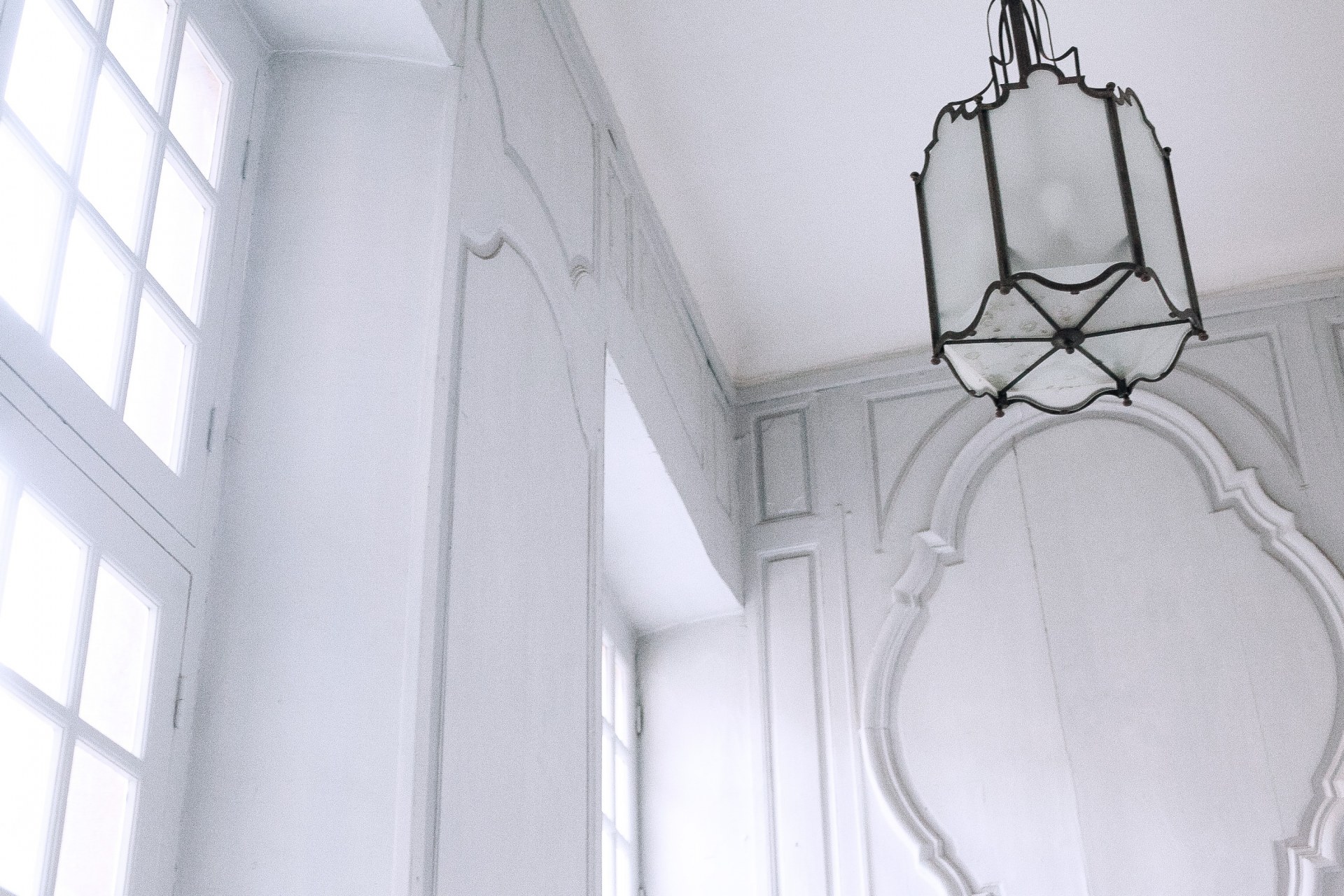
We all love rooms with high ceilings. They feel open and airy and don’t feel as cramped when we gather in groups. They even give interior decorators a big, blank canvas to work with. A big room with high ceilings can serve as a fantastic focal point in any home or office but can be troublesome when it comes to sound control.
Rooms with high ceilings tend to have echo issues. Some rooms are better, and some are worse in the echo department, but all can be effectively treated. Learning how to reduce echo in a room with high ceilings can transform your space from loud and reverberant to crisp and vibrant. Let’s look at how echo works and how we tackle these nuisance noises in rooms with high ceilings.
A bit about echo and how to reduce echo in a room with high ceilings
If we’re going to identify a solution for any problem, we need to start by understanding the problem itself. In the case of how to reduce echo in a room with high ceilings, we have to identify what causes echo and why the problem is particularly pronounced in large, open spaces. Let’s take a quick look at the physics of echo and how to turn a poor sounding space into a much more pleasant environment.
Echoes are caused when sound waves bounce off hard, reflective surfaces. Those waves redirect back into the open space of the room and result in an echo when they reach the source. The echo’s delay time is determined by the distance the sound waves travel before reaching your ears.
If sound waves and echoes are allowed to bounce around the room freely, the sound actually becomes amplified. This is called reverberation. Reverberation in the room will continually build until there is a fairly loud ambient room tone, causing people to raise their voices to compensate and making the situation even worse. To reduce the echo and reverberation you are experiencing, you need to incorporate wall, floor, and ceiling noise reduction techniques.
Absorbing sound waves
If you’re going to effectively reduce echo and reverberation, you need enough soft, absorbent surfaces to absorb a portion of the sound waves. Unlike hard, reflective surfaces, which cause sound waves to bounce around the room endlessly, softer surfaces like fabric covered furniture, carpeting, and noise reduction ceiling panels are able to trap some of those sound waves before they become a problem.
You don’t want to remove all the sound waves, though, or the room will sound dead and may feel uncomfortably quiet. The best way to absorb enough sound waves to reduce echo is to incorporate absorbent materials into multiple areas of your interior design. Familiarize yourself with how to reduce echo in a room with high ceilings, and you’ll understand how this concept works.
so, How to reduce echo in a room with high ceilings?
Rooms with high ceilings present a unique challenge when it comes to acoustics. Sound waves bounce back and forth off their larger walls and work their way up. The longer distances traveled by the waves in rooms like these make them ripe for echo.
While it’s a great idea to place things like bookcases and sound diffusers to scatter the waves in multiple directions, if you want to control the echo completely, you’ll need something to stop the waves in their tracks. Let’s look at a few options.
Wall panels
One of the most obvious places you’ll need acoustical absorption is on the walls of the room. They are very large spaces and are directly in line with the people speaking in the room, meaning sound waves can bounce straight back at us. In order to prevent that return, you need to scatter soft materials in that space.
Utilizing fabric wrapped acoustical panels is your first line of defense for how to reduce echo in a room with high ceilings. They are constructed of acoustical materials and trap enough waves to reduce both echo and reverberation. Place them near eye level for maximum effect.
They can be printed with any design or image you like, meaning these pieces of functional art can hang right in your line of sight and effectively reduce the amount of sound waves that are available to generate an echo.
Acoustical curtains
Sometimes the sides of large rooms contain very little wall space. If you’ve got big, beautiful windows that take up a good portion of your wall space, you’ll need a different solution to help handle your echo since you won’t want to hang wall panels that block them.
A great way to add absorptive materials to your windows is by hanging acoustical curtains. They are soft and thick and can pull double duty by blocking some of the summer sun that pours in and heats up the space. Slide them shut when you need sun or echo control, and open them up when you don’t.
The ability to adjust the amount of absorption on your walls is great, but high ceilings require you to cover even more surfaces. If you’re still learning how to reduce echo in a room with high ceilings, you’ll need to learn to bring some of those absorptive materials into the space above your head.
Ceiling panels
The same materials we use in panels on walls can be mounted on ceilings as well. When it comes to noise reduction, ceiling panels are a great option. Just like the wall panels, they can be mounted directly to the surface of the ceiling, transforming patches of your hard ceiling into sound absorbers. You can even hang some of them vertically, intercepting sound waves as they traverse the space.
These types of panels are a fantastic option when you are working with a flat ceiling. Still, if you’ve got a more industrial ceiling with exposed pipes and HVAC components, you’ll want to drop some of your noise reduction ceiling tiles below those noisy elements.
Suspended ceiling clouds
Since pipes and vents create noise of their own, it’s a great idea to hide them behind a beautiful set of suspended ceiling clouds. Ceiling clouds are another form of acoustical panel, but they are made to be suspended from the ceiling and can be arranged in very cool patterns to create stunning visual accents to the room.
If you’re looking for more of a drop ceiling noise reduction solution, you can go that route too. Suspending acoustical tiles in your T-grid is a vastly superior option to using traditional drop ceiling tiles in both appearance and sound control while still providing easy access to everything above it. But does using a drop ceiling help reduce noise between floors?
Insulation in the cavity between floors and ceilings
If there happens to be another floor above your grand room, you may need additional acoustical ammo to combat the sounds of life going on above you. A drop ceiling or ceiling cloud will help minimize noise to some extent, but if that room experiences heavy traffic, you’ll want to add mass to the ceiling itself.
In many homes and buildings, the space between floors and the ceilings below them contain an empty void. Filling that gap with high density insulation or ceiling noise reduction foam will go a long way toward silencing steps from above. Pairing insulation with a drop ceiling can take overhead footfalls out of your echo equation.
Floor treatments
Since one of the larger contributors to excess noise in a room comes from the floor, you’ll want to incorporate some sort of impact noise reduction measures there. It’s also just another large, flat surface that’s ready to reflect. Allowing your floor to absorb sound waves rather than reflecting them all will certainly help when you’re planning how to reduce echo in a room with high ceilings.
If carpeting is an option, that’s a great start. Carpeting muffles the sound of footsteps and shifting tables and chairs much better than wood, concrete, or tile floors do. When hard surfaces strike hard surfaces, they tend to kick out sound waves that are very noticeable.
If you don’t want to replace your beautiful hardwoods, consider throwing an area rug or a few runners down. You’ll get sound absorption where you really need it, without the permanent look of wall-to-wall carpeting.
Consult with professionals who know how to reduce echo in a room with high ceilings
When getting great results matters, make sure you consult with professionals. They can teach you all the tricks of the trade on how to reduce echo in a room with high ceilings, and you can be sure you aren’t wasting time and money on solutions that you’ll be underwhelmed by. Before you start purchasing fabric wrapped acoustical panels and sound blocking ceiling tiles, know how many you need and where they will be most effective. Who knows, they may show you new solutions that make your room look and sound better than you ever imagined.




